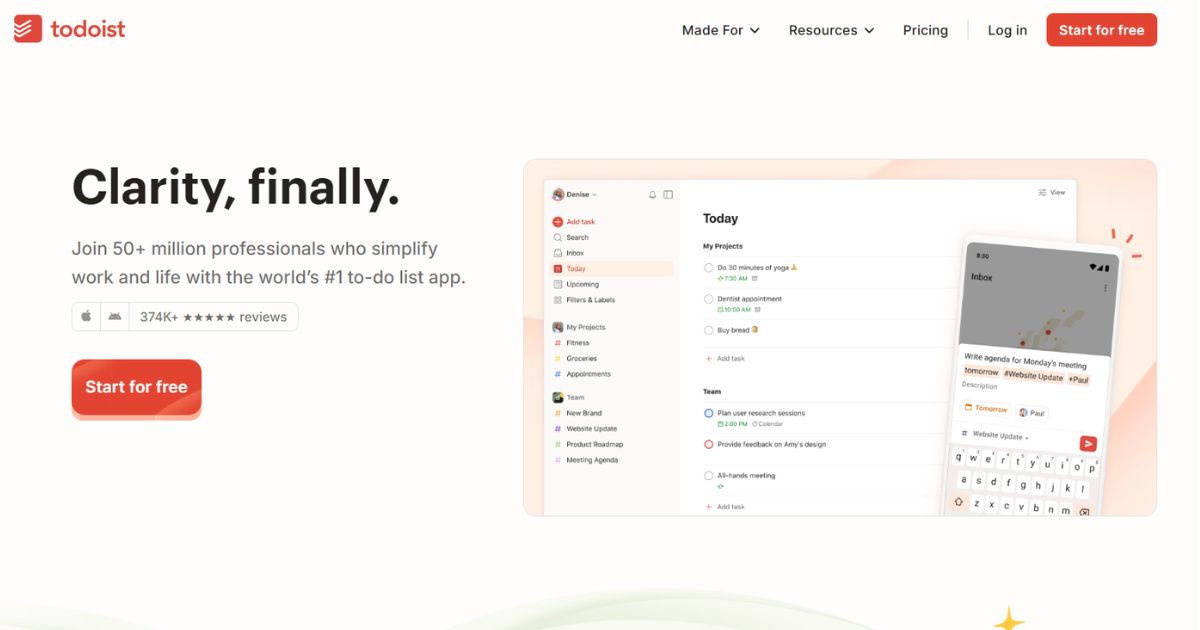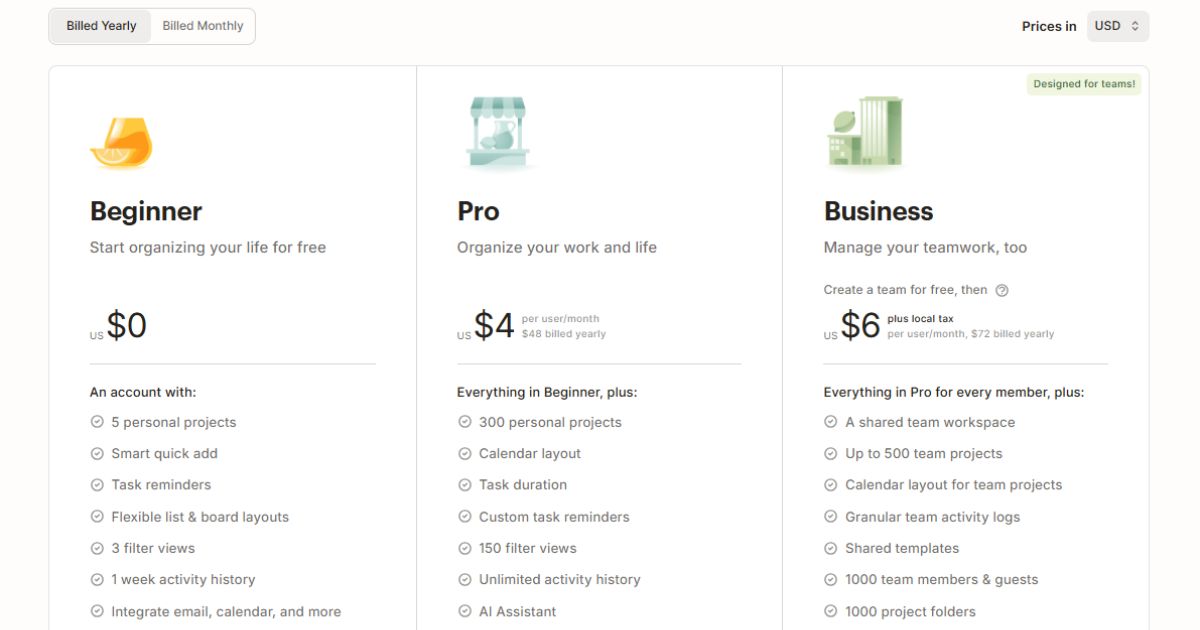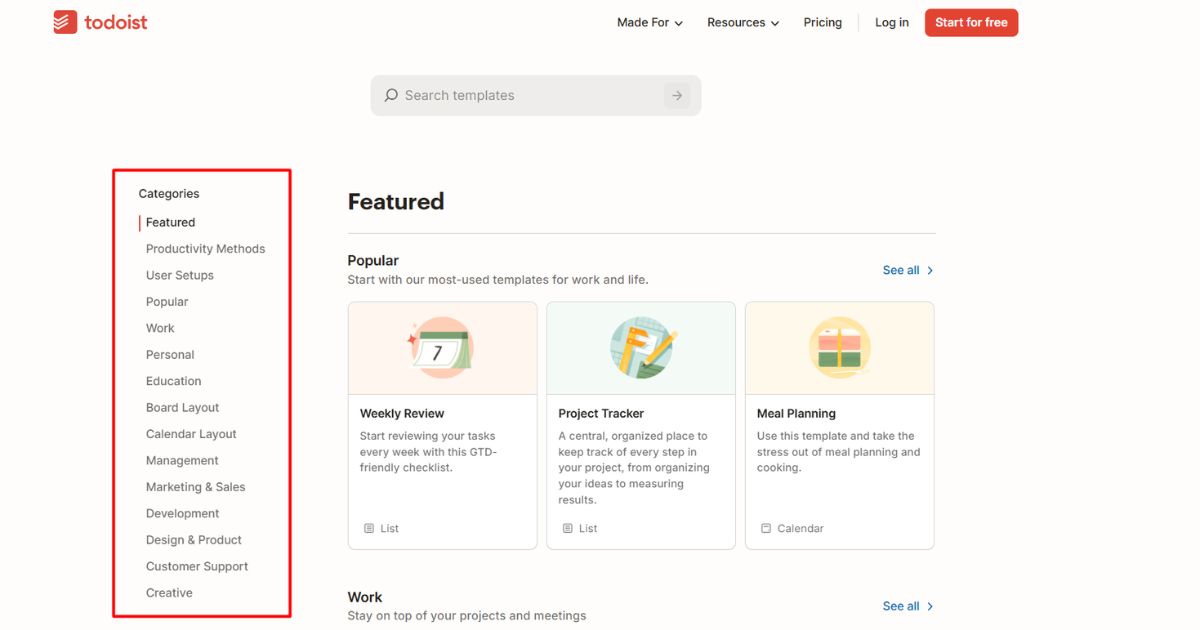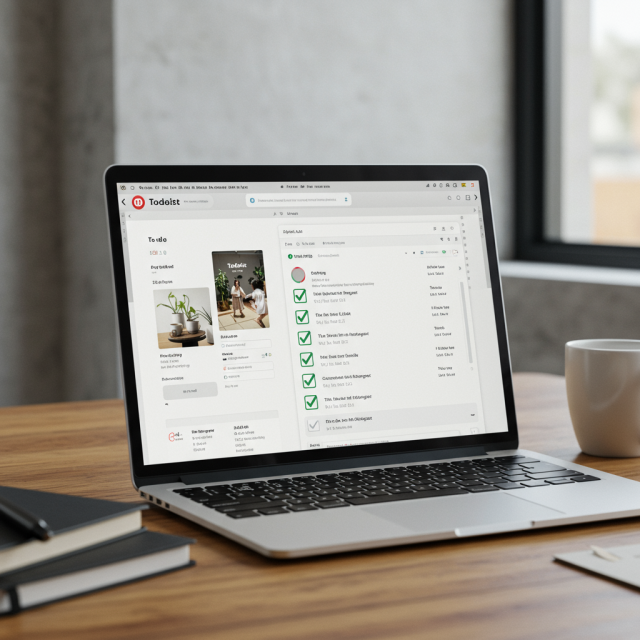In today’s fast-paced environment, keeping track of tasks and projects is essential for individuals and teams alike. With countless task management solutions on the market, Todoist has emerged as one of the most popular choices. In this comprehensive review, we’ll dive into what makes Todoist stand out, examine its core features, pricing plans, and weigh its pros and cons. Whether you’re a solo freelancer, a busy professional, or part of a small team, this guide will help you decide if Todoist is the right fit for your workflow.
What Is Todoist?
Todoist is a cloud-based task management and to-do list application designed to help users organize, plan, and collaborate on projects. Launched in 2007, it has grown a loyal following thanks to its intuitive interface, cross-platform functionality, and powerful integrations. Available on web, desktop, and mobile devices, Todoist syncs your tasks in real time, ensuring you never miss a deadline.

Key Features of Todoist
- Natural Language Input: Quickly create tasks by typing phrases like “Submit report every Friday at 3 pm,” and Todoist automatically parses dates and recurring rules.
- Projects and Sections: Organize tasks into projects, and break them down further with sections or subtasks for complex workflows.
- Labels and Filters: Assign labels (tags) to tasks and use custom filters to view tasks by priority, due date, or context.
- Priority Levels: Mark tasks with priority flags, ranging from P1 (highest) to P4 (lowest), to focus on what matters most.
- Collaboration Tools: Share projects, assign tasks to team members, comment on items, and track progress with activity logs.
- Integrations and Automation: Connect with over 60 apps, including Google Calendar, Slack, and Zapier. Use templates and webhooks to automate repetitive tasks.
- Karma and Productivity Visuals: Gamify your progress with Karma points, streaks, and weekly activity graphs to stay motivated.
Pricing Plans

Todoist offers a tiered pricing model to suit different needs, from solo users to large teams.
- Free: Up to 80 active projects, five collaborators per project, basic reminders, and up to 5 active filters or labels.
- Pro ($4/month billed annually): 300 active projects, 25 collaborators per project, reminders, labels & filters, comments & file uploads, and more advanced productivity visualizations.
- Business ($6/user/month billed annually): Everything in Pro plus 500 shared projects, team management tools, priority support, and admin controls.
All paid plans come with a 30-day money-back guarantee and advanced security features, including two-factor authentication and activity log exports.
Pros & Cons
Pros:
- Clean, intuitive interface that’s easy to learn.
- Powerful natural language parsing for quick task entry.
- Robust cross-platform support with real-time sync.
- Flexible project organization with sections and labels.
- Strong integrations and automation capabilities.
Cons:
- The free tier is somewhat limited for power users.
- No native time tracking or advanced Gantt charts.
- Occasional sync delays are reported on mobile devices.
Comparison with Competitors
While Todoist excels at straightforward task management, other apps target slightly different needs. For example, Notion offers a fully customizable workspace combining notes, databases, and wiki pages—ideal for those wanting an all-in-one tool. Asana focuses on team workflows and project timelines, providing boards and Gantt-style views. Trello’s card-and-board approach is perfect for simple Kanban workflows. If you need a lightweight, highly focused to-do list, Todoist often outperforms these alternatives in speed and ease of use.
Who Should Use Todoist?

Todoist is best suited for individuals and small teams seeking a streamlined task manager without a steep learning curve. Freelancers, students, and busy professionals will appreciate its quick entry, mobile reliability, and gamified productivity features. For larger enterprises with complex project dependencies or resource management needs, a dedicated project management suite might be more appropriate.
Tips to Get the Most Out of Todoist
- Establish a clear labeling system: Use consistent labels like @work, @personal, or @urgent to filter tasks quickly.
- Leverage templates: Save routine project structures (e.g., blog post creation or product launches) as templates to speed up setup.
- Review your inbox daily: Process new tasks each morning, assign due dates and priorities immediately to avoid a backlog.
- Integrate with your calendar: Sync Todoist with Google Calendar or Outlook to view tasks alongside meetings.
- Use keyboard shortcuts: Learn Todoist’s quick keys to navigate, add tasks, and complete items without needing to use your mouse.
Conclusion
Overall, Todoist continues to be a top contender in the task management space for this year. Its blend of simplicity, speed, and powerful features like natural language input and robust integrations makes it a strong choice for individuals and small teams. While it may lack some of the deep project management functions found in enterprise tools, most users will find everything they need to stay organized and productive. Give the free tier a try, and if you need more advanced controls, upgrade to Pro or Business to unlock the full potential of Todoist.
Visit our Another Review Blog: Notion Comprehensive Review
Frequently Asked Questions
1. Is Todoist really free?
Yes, Todoist offers a free plan with up to 80 active projects, 5 collaborators per project, and basic task management features. For more advanced capabilities, paid plans start at $4/month.
2. Can I use Todoist offline?
Absolutely. The mobile and desktop apps support offline mode. Any changes you make while offline will automatically sync once you reconnect to the internet.
3. Does Todoist integrate with calendars?
Yes, Todoist integrates seamlessly with Google Calendar, Outlook, and other calendar apps using built-in integrations or third-party services like Zapier.
4. How does Todoist protect my data?
Todoist employs industry-standard encryption (AES-256) in transit and at rest, two-factor authentication, and regular security audits to keep your information safe.









